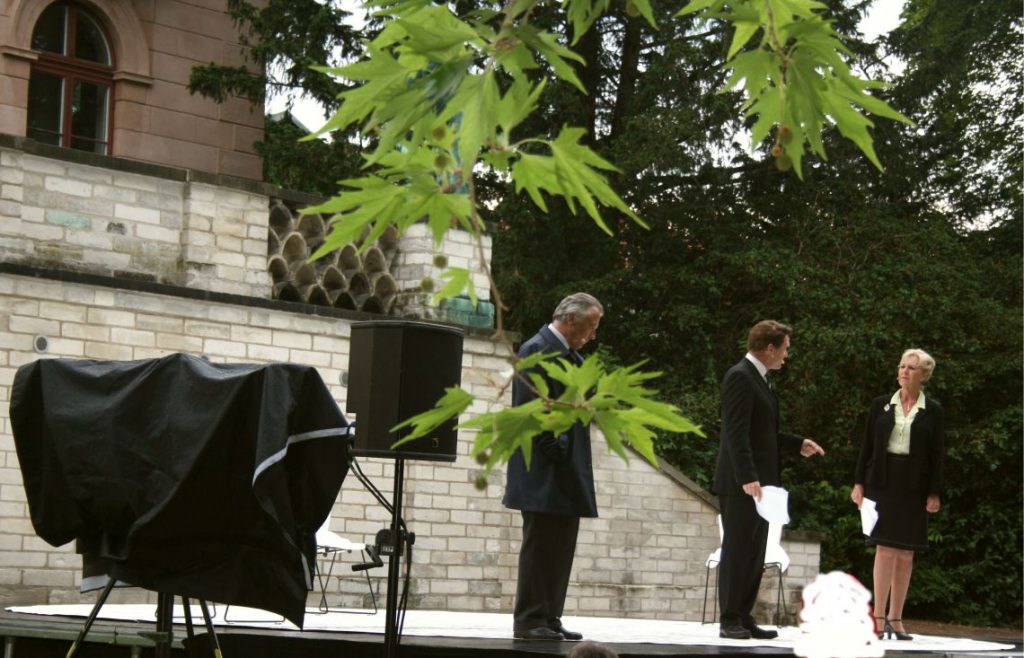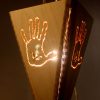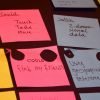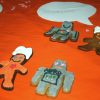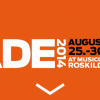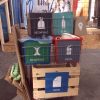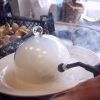I simply L-O-V-E when fun is something that also makes your brain workout. So this week’s festival “Science in the City” in Copenhagen is definitely the place to be for me and my fellow geeks 🙂
Sunday I had an early start. Meaning that I had to skip my usual fitness class, so I was delighted to meet the Active Living House by University of Southern Denmark as my first stop.
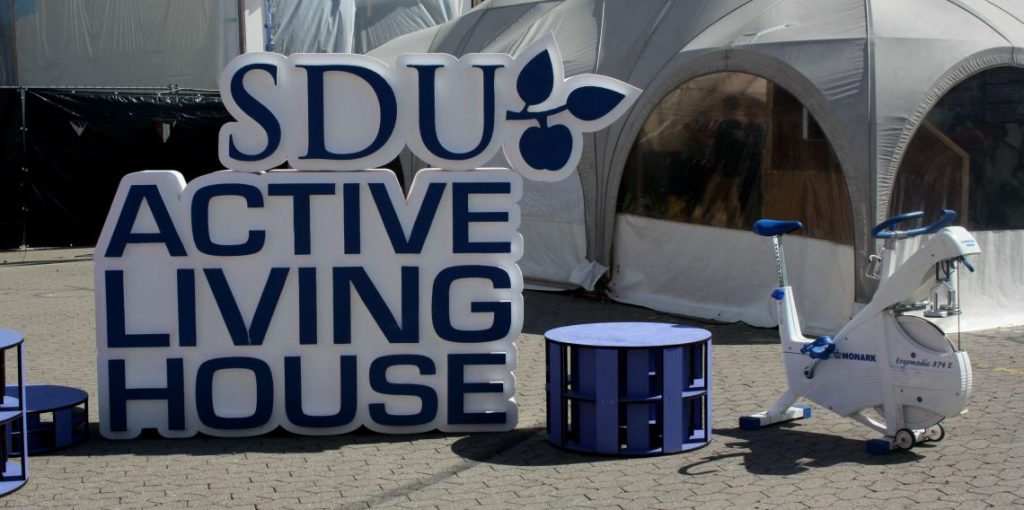
The exercise bike immediately caught my eye.
Danish Health and Medicine Authority recommends that adults move their body with moderate or high intensity at least 30 minutes a day, whereas children should be active 1 hour a day. But it does not has to happen in a gym. That is why Active Living House has created 4 zones to get your body moving; Transportation, Home, Leisure and Work.
What do you do within these 4 zones of your everyday life to reach your 30 minutes a day? Your habits might look different than you think they do.
Download the Free APP of Active Living (in Danish) and let’s see.
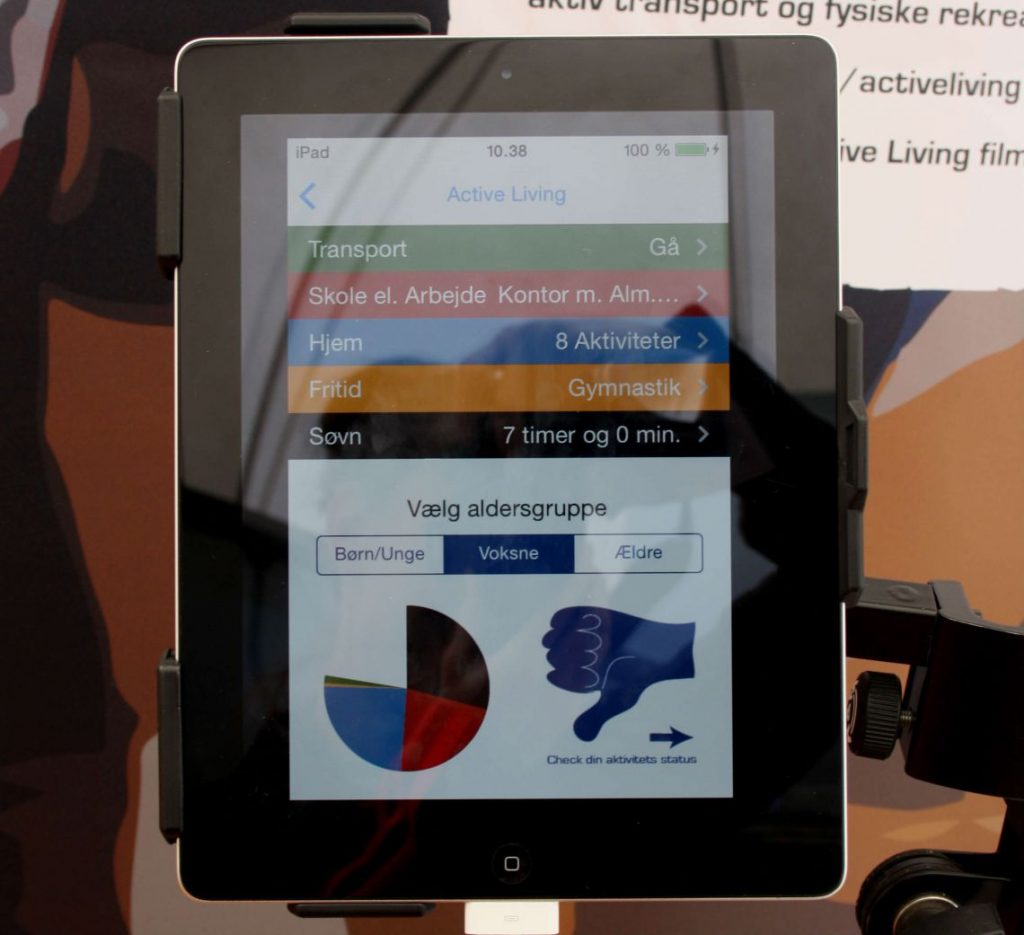
One thing is what good you can do to yourself and your body. But how about the good you can do to society? Technical University of Denmark (DTU) shows me a few options.
Touring their tent, I learned how much Nitrous Oxide N2O green plants produce. We must be careful to spend these biogases in the right amount for fertilizer application in farming to make the plants grow in a natural nutrient cycle. N2O is actually 300 times stronger as a greenhouse gas than CO2 (carbon dioxide) – so do be careful with that strong plants.
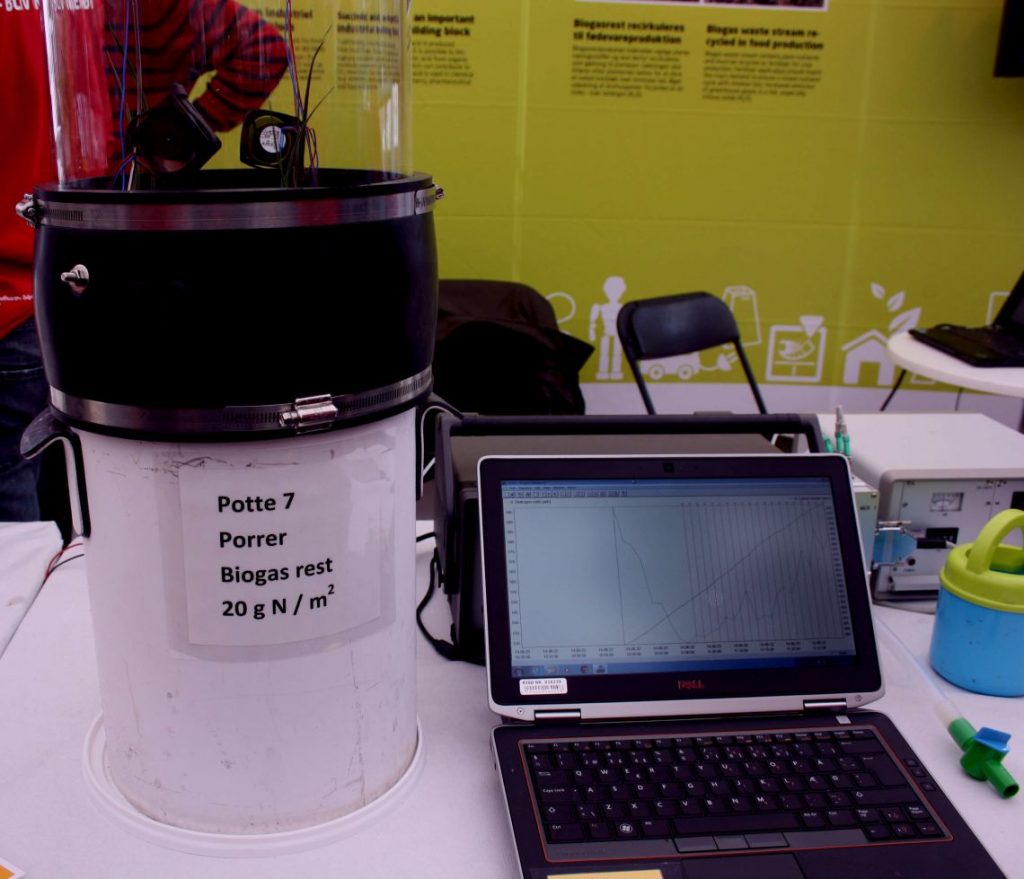
The computer calculates how much biogas waste this leek produces.
I also saw a complicated bunch of blinking spots which is about to turn into intelligent skin in use for future prosthesis for arms and legs. And horrified I realized that a thrown away cigarette butt is too small to be picked up by machines – it actually cost 2 DDK pr. butt to employ someone to do so!
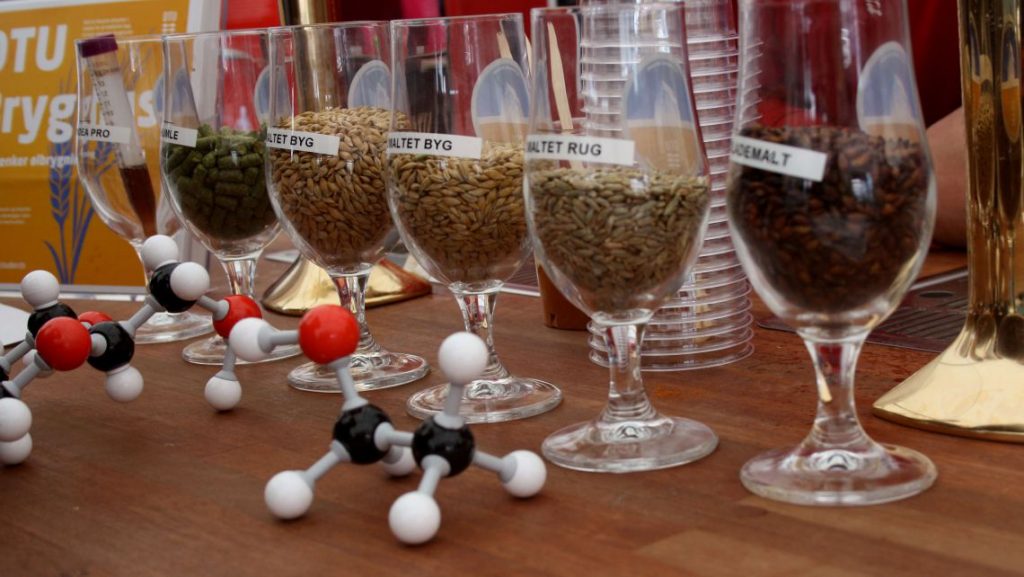
The enzymes (in the glas to the far left) replaces malt to reduce the amount of CO2 in beer from DTU’s very own brewery.
However, in order not to make it all too politically correct I ended my tour by the draught beer from DTU’s very own brewery. What a draught … they actually reduce the amount of CO2 by 8 %, because they replace the traditional transformation from barley, wheat or rye into malt with adding of enzymes.
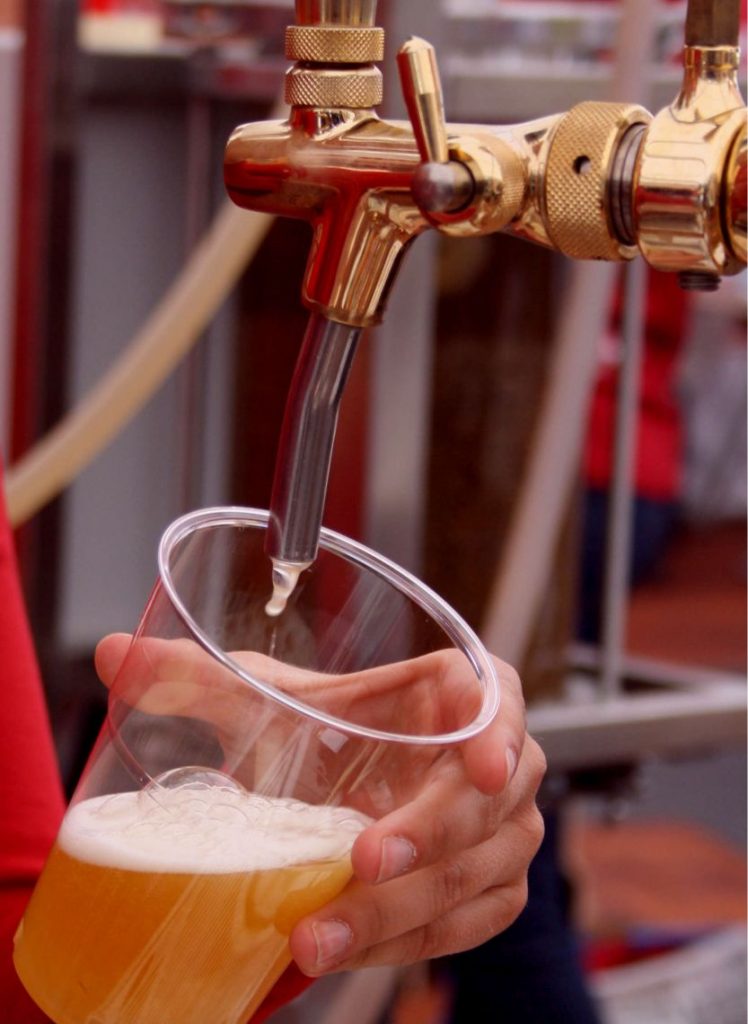
Great taste with a clean conscience.
Having spent a great deal of my career in National Health Service I headed for the corner called “Hospital of the Future”. Here they had a serious aging issue …
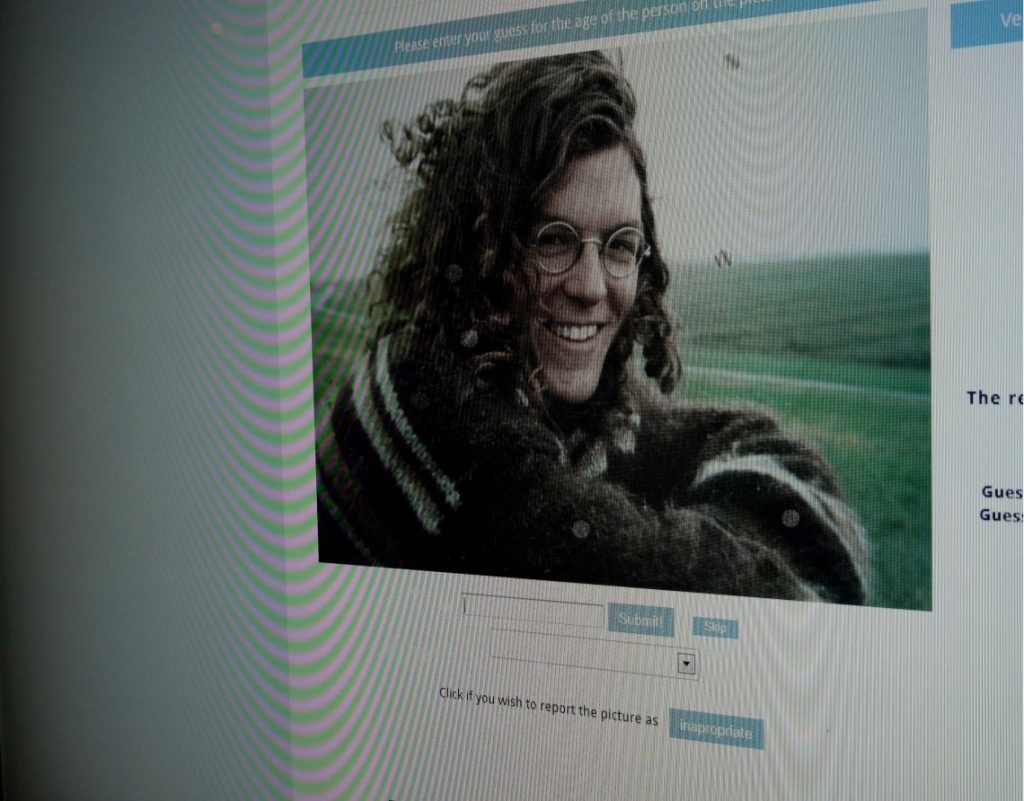
How old do you think this lovely lady is? They challenge you to have a guess, and it is actually surprisingly hard to aim correctly. The point is that treating seriously ill patients (e.g. patients with cancer) is difficult, if they are judged solemnly by their age. Especially since cancer mainly hits persons aged 65 or older, who are often treated with up to 5 different kinds of medicine every day.
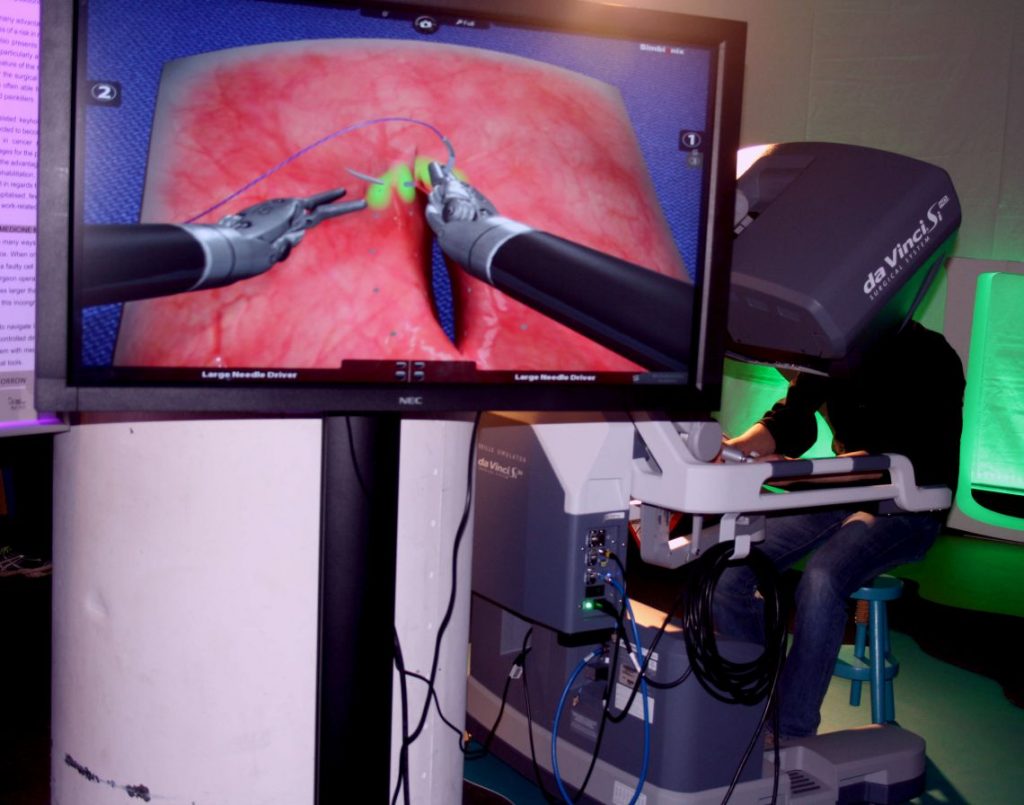
The man in the box controls the robotarms to do a surgery.
In case of serious illness a skillful surgeon might be needed, and this simulator makes you work like a surgeon. It is a rather difficult task to make a ‘granny knot’ to close the cutting.
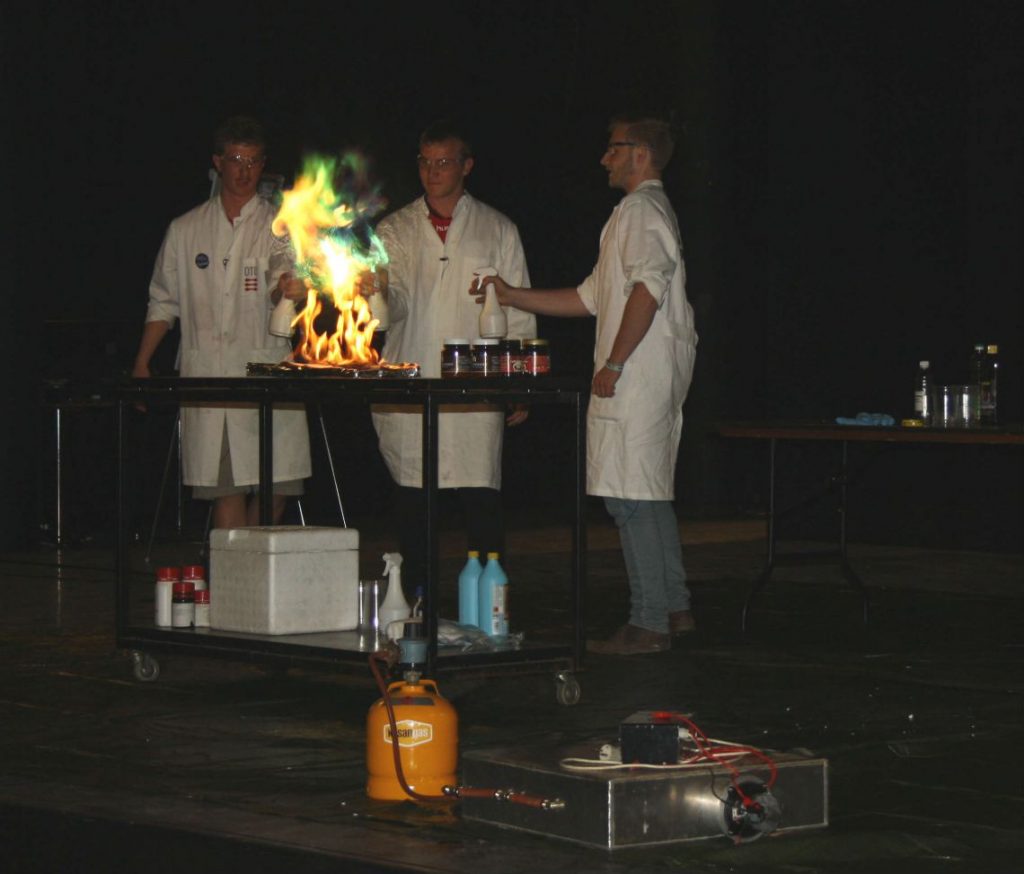
Want colourful fire? Just add a little natium.
After that I needed to sit back, relax and be “edutained”. Luckily, I walked straught into the finals of the Unofficial Europen Science Show Contest. Here is it all about making a great show while you teach children and young people that science is cool. Trust me, it works like magic!
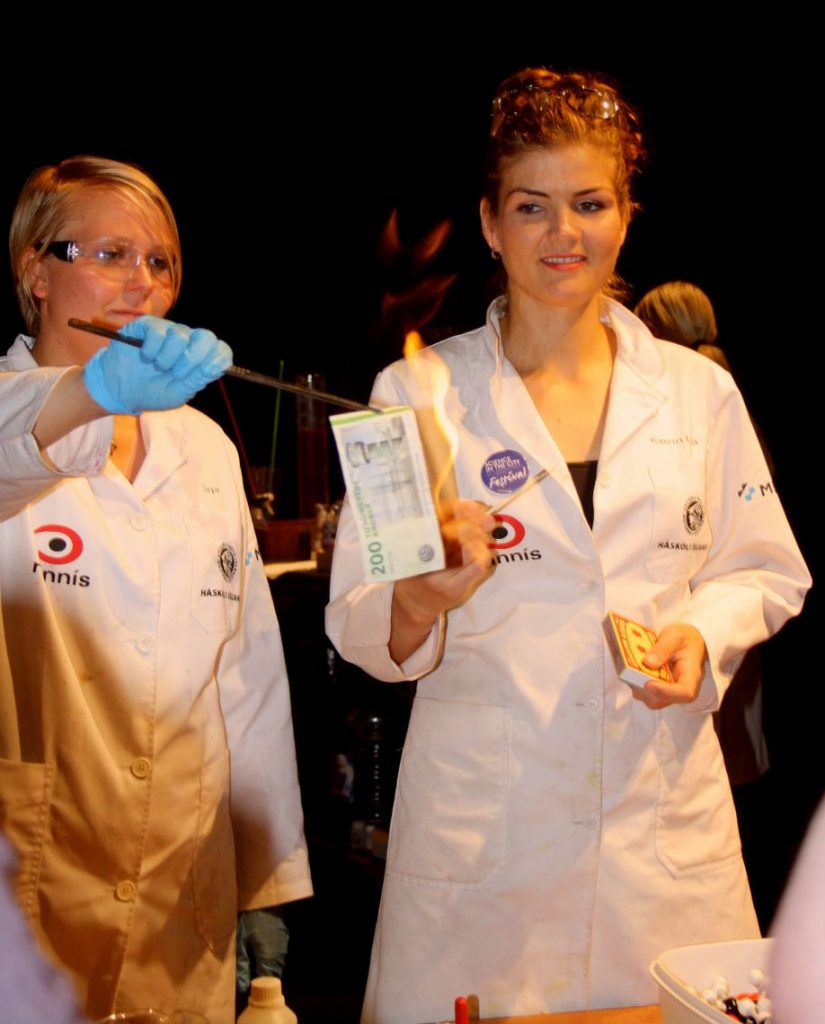
Do not try this at home. These ladies are professionals.
I was really impressed with these young ladies from Iceland. Their chemical mixture created a firesafe liquid, so they actually managed to set fire to a bank note, without bankrupting themselves (the note was a little wet, but still completely useful). I could not believe it, so they repeated the trick, letting me strike the match this time. Result was the same. Of course.
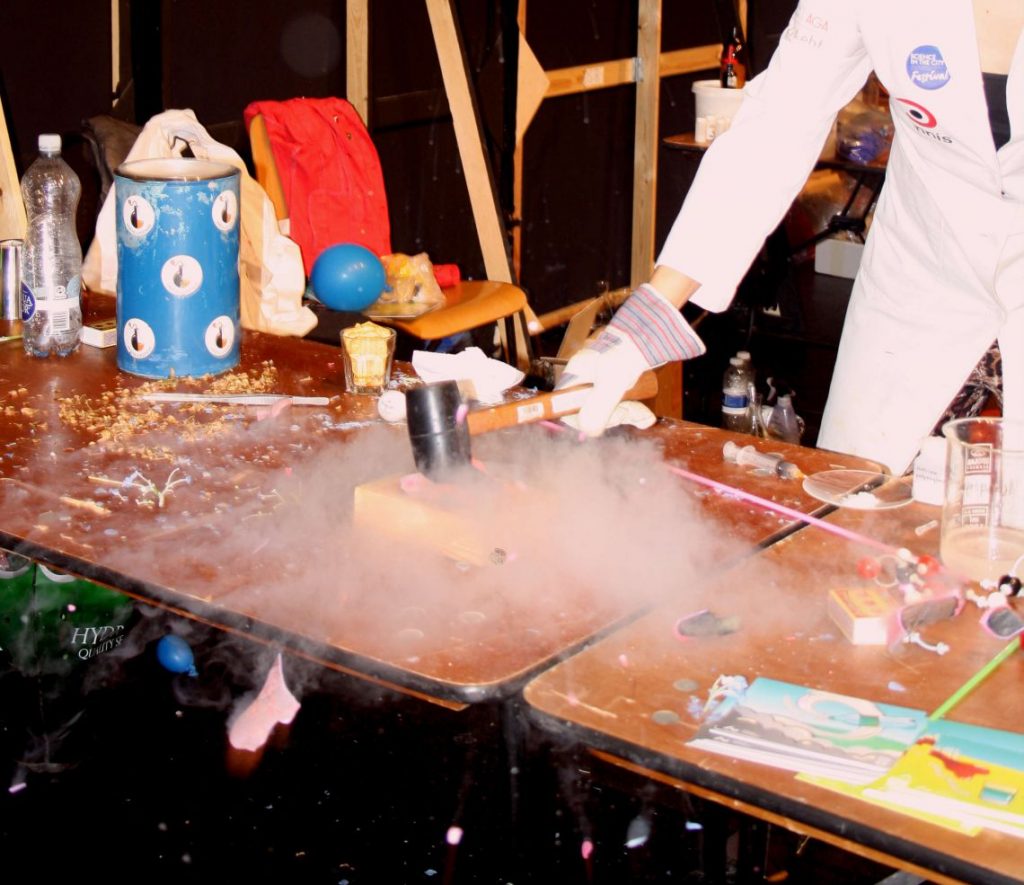
Liquid Nitrogen (about minus 200 C) makes flexible material like flowers and rubberboots smash like glass.
Nevertheless, I am proud to say that nothing beats true Danish Dynamite. The Danish team won the contest with a huge amount of fire in all colours and shapes. Home win!
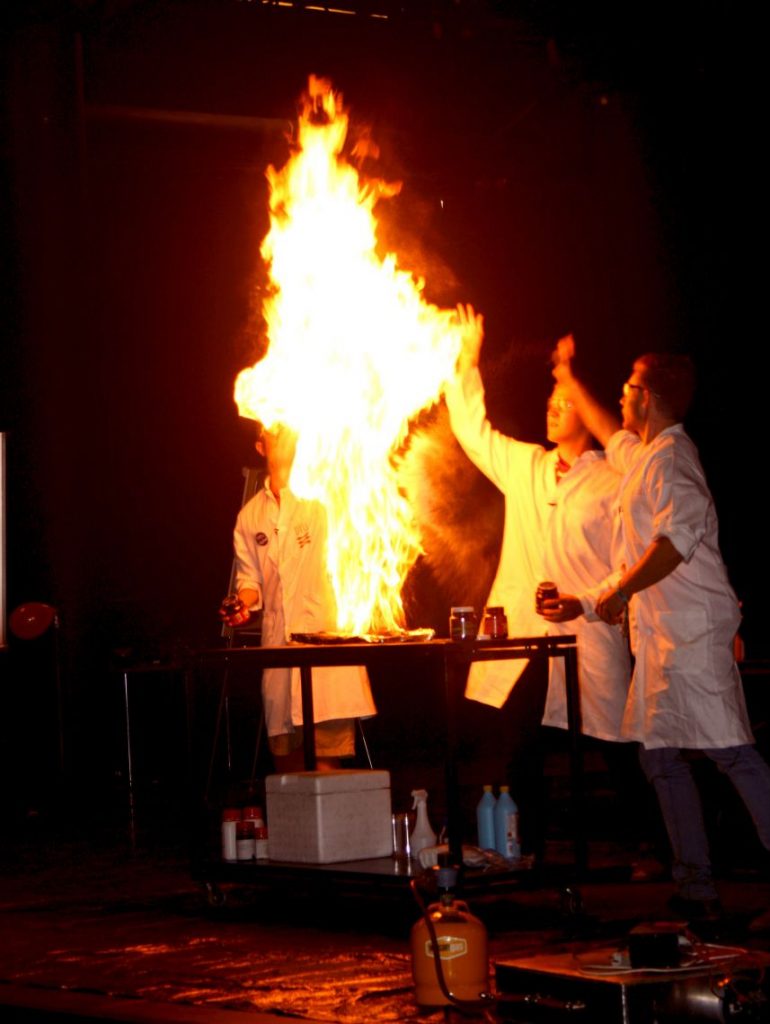
Weeee are the Champions!!! Danish winners of European Science Show.
Finally, I ended up in a more domestic environment. Having my neighbourhood floaded with too much rain, I was happy to learn that the authorities are planning to form the infrastructure to avoid that in futire. That could be by creating parks along the lakes with hills and valleys to cup the water and digging ditches in the middle of the broad boulevards to stop water from flowing into the buildings.
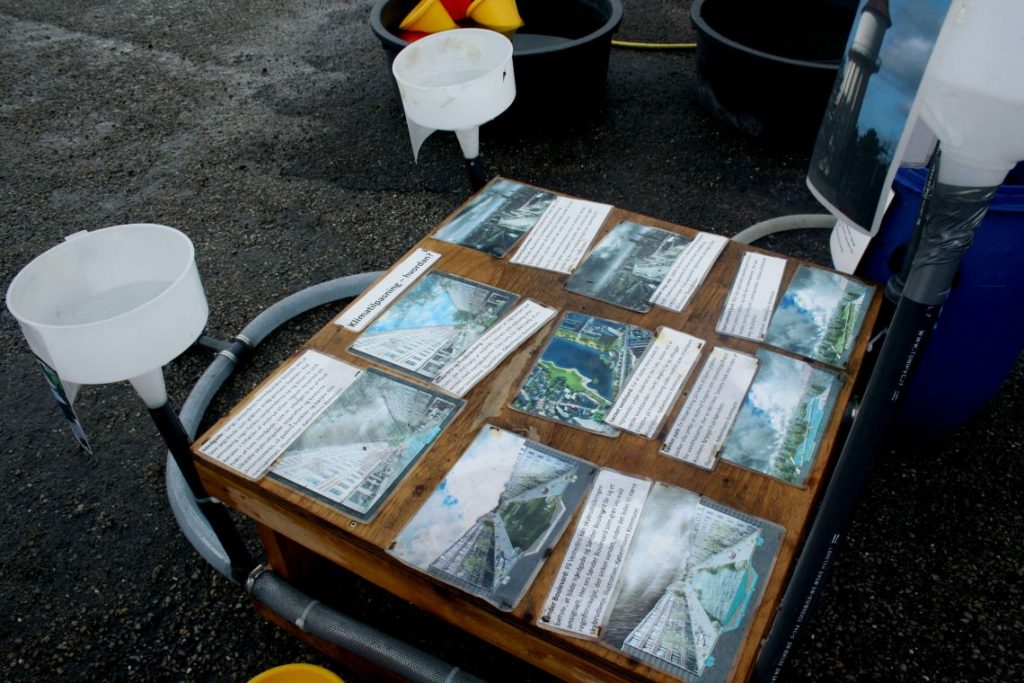
This model is created by Energi- og Vandværkstedet, who teaches the next sustainable generations. The model unites adult theory and planning of the city with the childish playing of pouring water into a bucket and realizing when it runs over your socks are wet.
And speaking of home … Met my home for this years’ holiday:
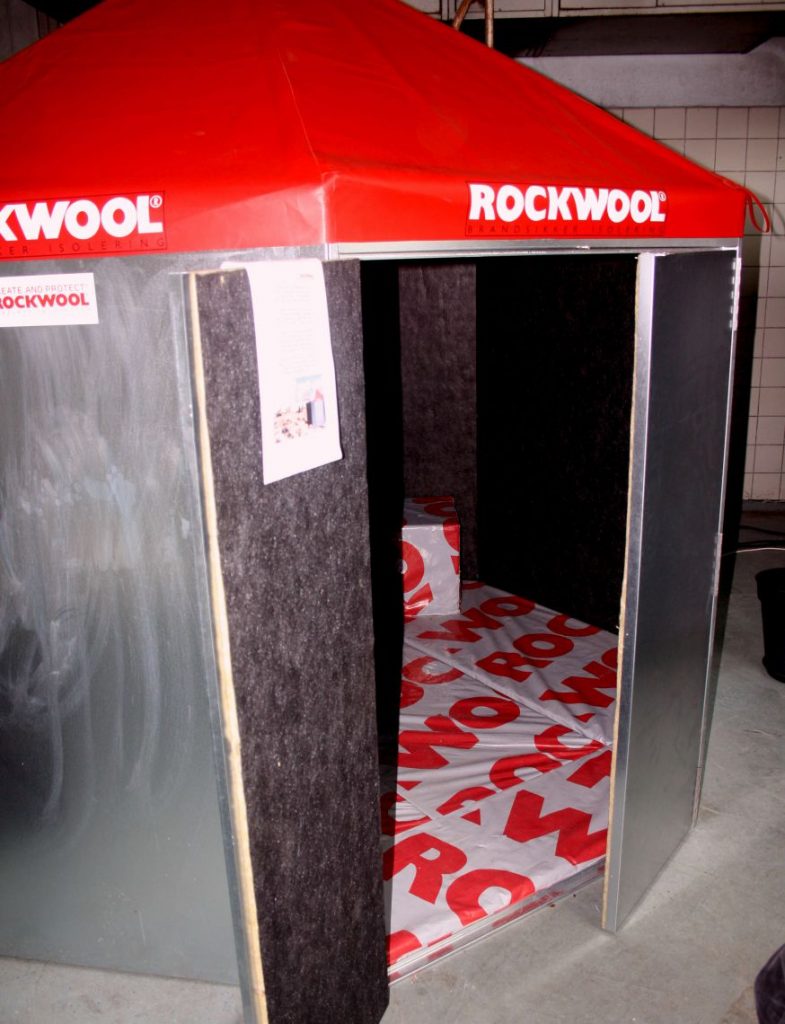
Home sweet home (at least for my holiday).
Attending Roskilde Festival as a frequent guest, I decided to do some extra for my accommodation this year. Created and tested at last years’ festival by Orange Innovation and Rockwool they are now ready to be used – by me and the inhabitants in future refugee camps, if results turns out well. So a little dry and warm luxury for my festival and a good cause to help and support.
Are you also hungry for more science?
Events are open until Thursday. Have look at the programme.
PS: You can even go to the theatre for free – and open air. Tuesday night the play “Copenhagen” about the mysterious meeting in 1941 between the Danish physicist Niels Bohr and the German physicist, Werner Heisenberg plays in the garden behind the Carlsberg Academy. Scientific power is about to be created.
I’ll be there. Will you? Get your free ticket for the play “Copenhagen”.
DO YOU RULE SCIENCE OR DOES SCIENCE RULE YOU?
Danish physicist Niels Bohr moved into his mansion at the Carlsberg Academy back in 1932 (having his own private pipeline of beer from the brewery). Being a winner of the Nobel Prize in Physics back in 1922 Bohr was a popular man to work with among young and skillful physicists, but especially one stood out from the crowd; the German physicist, Werner Heisenberg. He often visited Bohr in Copenhagen, where the two of them spend hours of walking and talking … walking and talking … One night in 1941 they had a heated discussion about developing Atom Bombs (outside in the garden so GESTAPO would not be listening, as they had spys everywhere during World War II). Later the two men disagreed on what exactly they have discussed this night, but it is certain that they faced quite a dilemma in possesing the knowledge of how to create an A-bomb and giving or not giving this knowledge free.
The Festival Science in The City and English Theatre in Copenhagen has replayed the meeting in front of Niels Bohr’s house.
